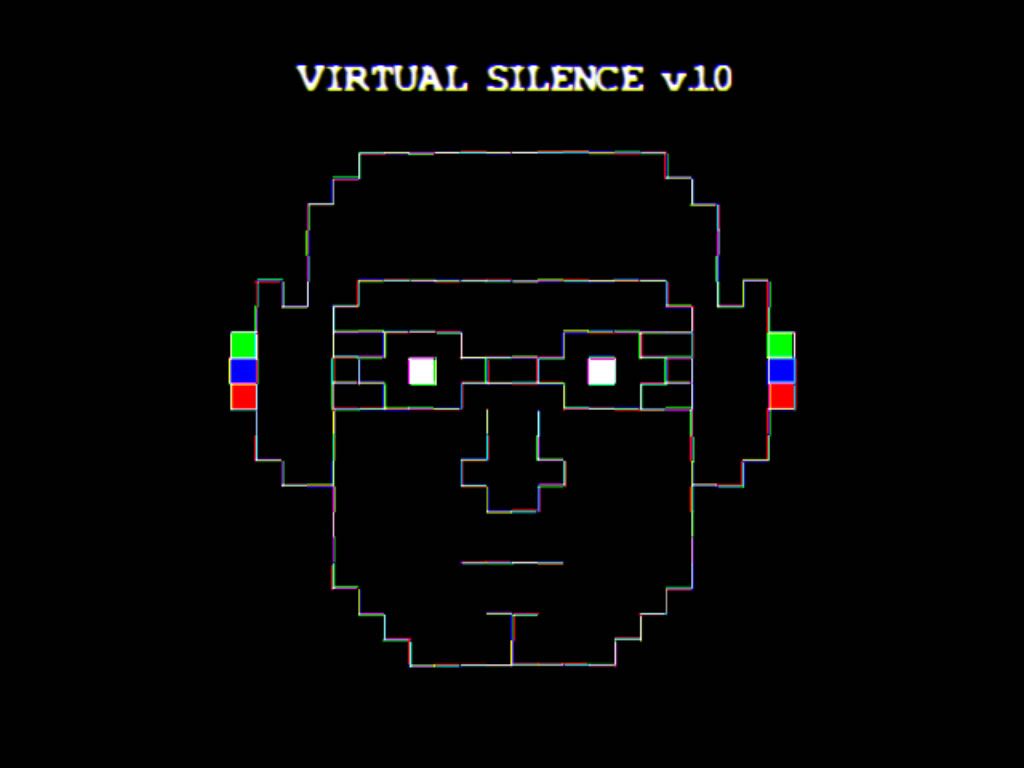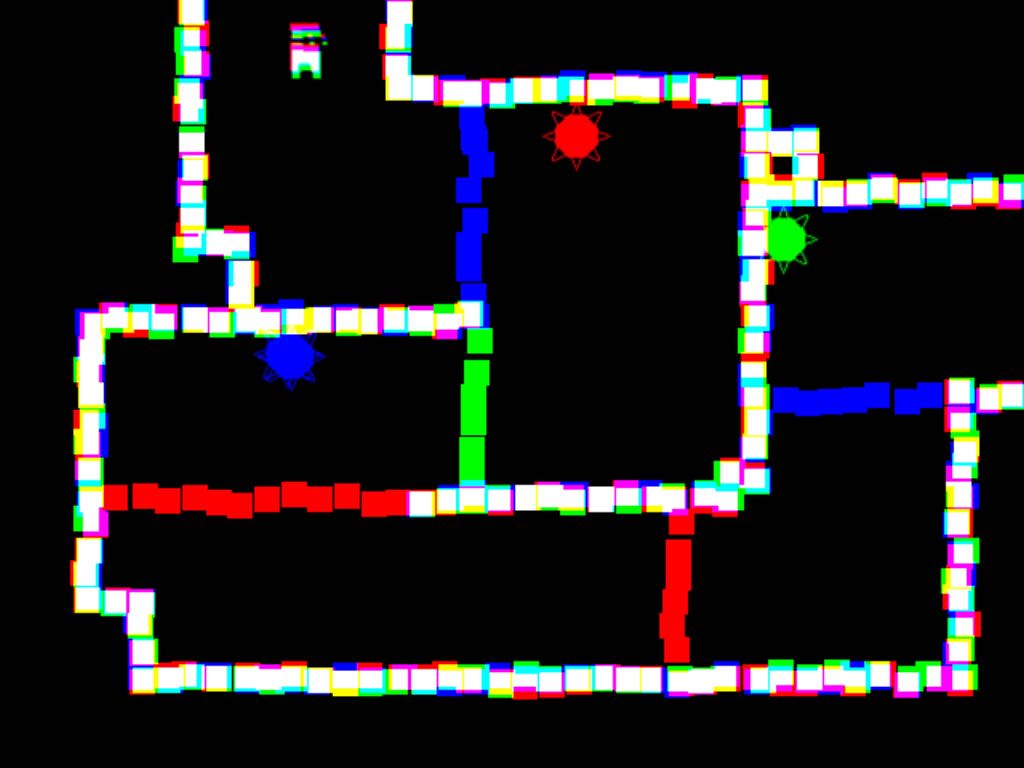Retro Replay Review
Gameplay
Virtual Silence places you directly within Jason’s mind, where your character embodies his consciousness navigating a series of surreal tests. As you traverse these abstract environments, you’ll use two core mechanics: shooting small projectiles to clear hazards and altering the environment’s color to solve puzzles. Each test requires careful timing and strategic use of color-matching principles to overcome barriers that vanish when their hue aligns with the background.
(HEY YOU!! We hope you enjoy! We try not to run ads. So basically, this is a very expensive hobby running this site. Please consider joining us for updates, forums, and more. Network w/ us to make some cash or friends while retro gaming, and you can win some free retro games for posting. Okay, carry on 👍)
The game unfolds across three distinct trials, each increasing in complexity and psychological intensity. Early challenges introduce basic color puzzles and target practice, teaching you how to switch tones on the fly. Later stages layer multiple colors, moving platforms, and hostile obstacles that demand both quick reflexes and puzzle‐solving acuity. The interplay between action and puzzle elements makes for a unique pacing where moments of frenetic shooting alternate with more contemplative color-based riddles.
Controls are responsive and intuitive, whether you’re aiming bullets or toggling between color palettes. While the learning curve is gentle at first, the difficulty ramps up significantly in the final test, where split-second decisions and accurate color perception become crucial. Players seeking a hybrid of action and mind-bending puzzles will find Virtual Silence’s gameplay loop both challenging and rewarding.
Graphics
Visually, Virtual Silence opts for a minimalist yet evocative aesthetic. Environments are rendered in bold, flat colors that shift dynamically as you manipulate the world’s palette. This abstract style emphasizes clarity during puzzle segments—obstacles stand out sharply against the background once you’ve aligned the correct hue. At the same time, it creates a dreamlike atmosphere that reinforces the notion of peering into Jason’s inner world.
Special attention was given to lighting and color transitions, which glow softly as you trigger palette changes. These effects heighten the sense of immersion but come with a caveat: rapid flashes and color shifts occur frequently, especially during critical puzzle sequences. A built-in warning alerts players to the risk of photosensitive epileptic seizures, and toggling certain visual effects off is recommended for those sensitive to flashing imagery.
Despite its simplicity, the visual design rarely feels repetitive. Each test area introduces new shapes and patterns—floating cubes, twisting corridors, and abstract glyphs—that keep scenes fresh. Particle effects accompanying bullet impacts and palette swaps add a tactile quality to interactions, ensuring that every action feels earned and visually satisfying.
Story
At its emotional core, Virtual Silence tells the poignant tale of Jason, an autistic child who has never spoken. The narrative begins in the real world: Jason’s mother, driven by hope, consents to an experimental treatment that promises to unlock Jason’s voice. What follows is a risky procedure that injects electric shocks into Jason’s brain, plunging him into a virtual realm of three rigorous tests.
Throughout the game, story beats are conveyed via subtle environmental cues and occasional voiceovers from the doctor overseeing the experiment. There’s a somber tension as you progress, aware that failure in this virtual space could mean no improvement for Jason—and that success may come at unforeseen costs. This underlying uncertainty adds depth to each trial, turning mechanical challenges into emotional hurdles.
While dialogue is sparse, the game leverages imagery to communicate Jason’s inner struggles. Fragments of memories, abstract representations of anxiety, and fleeting glimpses of a mother’s concern appear between levels. These narrative vignettes enrich the experience, making each puzzle feel like a step toward understanding Jason’s unspoken world.
Overall Experience
Virtual Silence offers a compelling blend of action, puzzle-solving, and emotional storytelling. Its inventive use of color mechanics and minimalist graphics supports an immersive journey into the mind of a nonverbal child. The fusion of shooting elements with environment manipulation keeps you engaged, while the narrative stakes lend real weight to each success or failure.
Caution is advised for players sensitive to flashing lights, as the game’s reliance on rapid color changes can be intense. Fortunately, the developers provide options to tone down certain visual effects. Beyond the sensory concerns, there’s a haunting beauty to the experience: you’re not just playing a game, you’re participating in Jason’s fight to find his voice.
For those seeking an unconventional title that marries challenging gameplay with heartfelt storytelling, Virtual Silence is a standout. It demands patience, precision, and empathy from its players. By the time you complete all three tests, you’ll walk away with a deeper appreciation for the silent battles many face—and the hope that a breakthrough, however experimental, can transform a life.
 Retro Replay Retro Replay gaming reviews, news, emulation, geek stuff and more!
Retro Replay Retro Replay gaming reviews, news, emulation, geek stuff and more!









Reviews
There are no reviews yet.